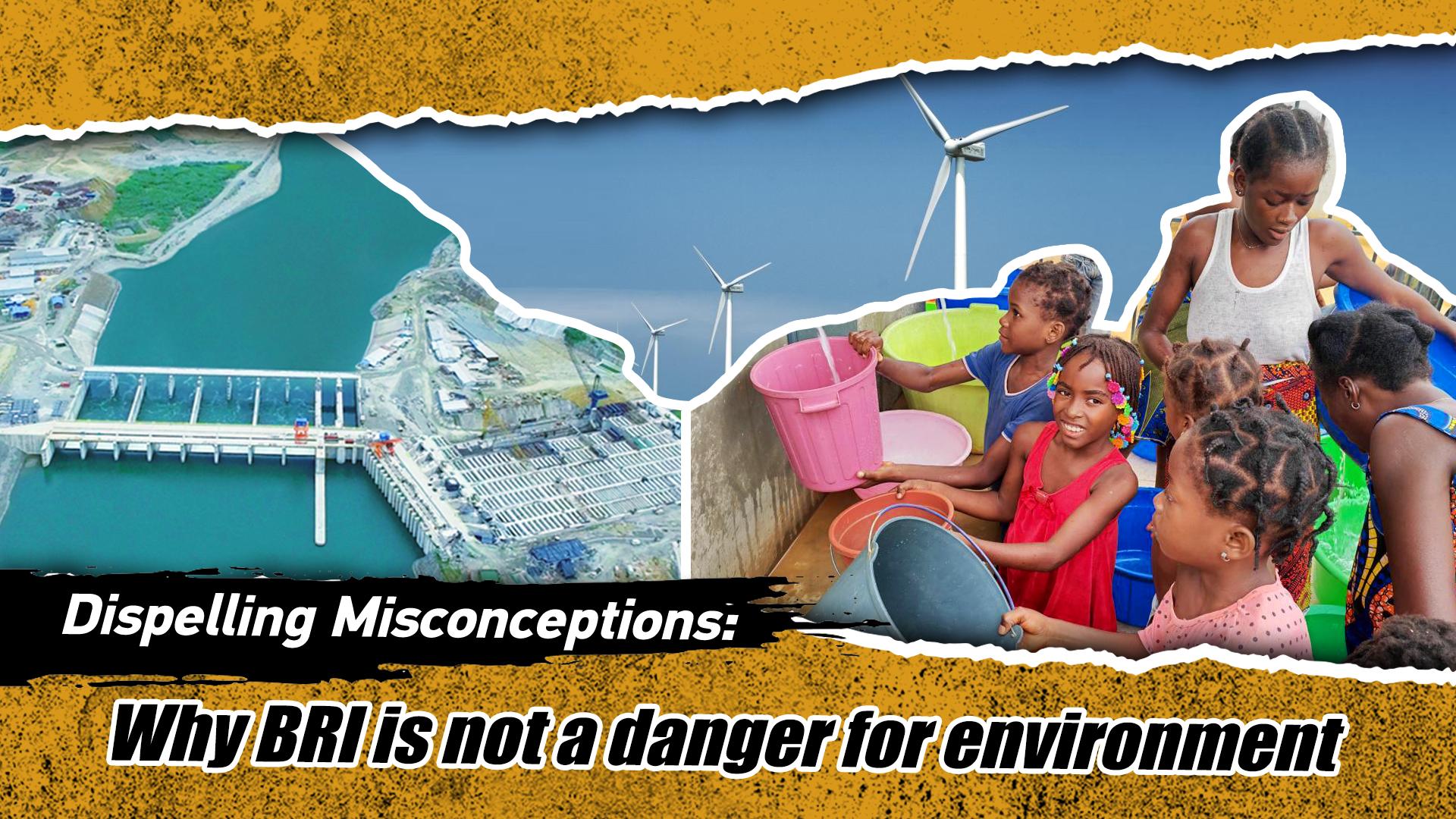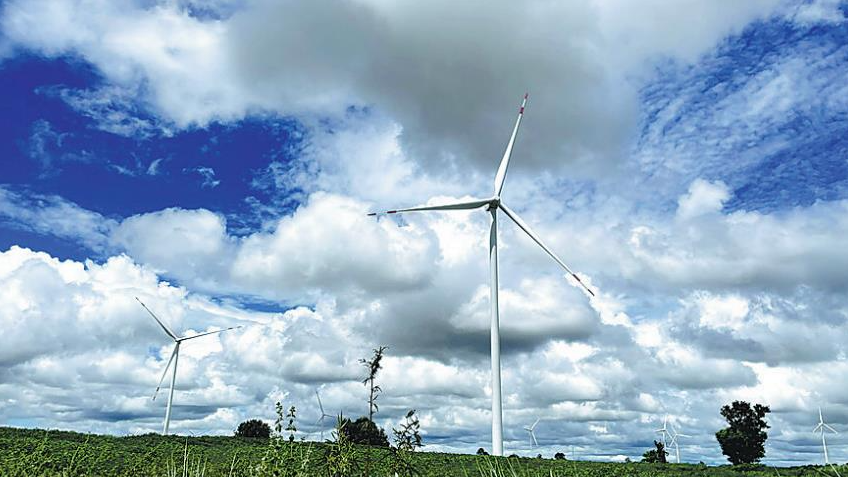
Editor's note: Since its proposal, some Westerners have never stopped discrediting the Belt and Road Initiative (BRI) in the past 10 years. Is the BRI predatory? Is it a geopolitical tool? Is the initiative a complete failure? Introduced at the BRI's 10th anniversary, Dispelling Misconceptions on BRI is an eight-part series debunking Western lies on the initiative. The third essay refutes the allegation of BRI's unsustainability.
By Imran Khalid
Ever since 2013 when China launched its Belt and Road Initiative (BRI), some Western powers, driven by misplaced apprehensions, have been persistently fueling a campaign of disinformation against the initiative. In the prevailing discourse on the BRI, Western think tanks have blamed China's large-scale investment in coal and other fossil fuels for possible intensification of carbon emissions. They claim that the BRI must align with the Paris Agreement and prioritize environmental sustainability.
For instance, an article published by the U.S.-based Council on Foreign Relations accused the BRI of being "dominated by fossil fuels." "BRI's fossil fuel investments will make combatting climate change more difficult. The U.S. needs to offer developing nations an alternative means of acquiring clean energy," the article said.
It is crucial to evaluate the BRI from a balanced standpoint that recognizes its immense potential benefits, as well as China's steadfast dedication to environmental safety. While environmental concerns are valid, it is essential to recognize that construction and development projects are ongoing worldwide, irrespective of the BRI's existence. Hence, the demand for environmentally friendly policies should not be limited to the BRI alone. China, the driving force behind the BRI, is actively transitioning towards a green economy. This commitment reflects China's leadership in balancing economic development with environmental responsibility on a global scale.
As the BRI continues to shape the global landscape, its expansion into various dimensions, including the Digital Silk Road, Health Silk Road, and Polar Silk Road, underscores the initiative's evolving nature and commitment to addressing pressing global challenges. Among these dimensions, the Green Silk Road stands out as a beacon of hope for a world grappling with environmental crises and the urgent need for sustainable development.

The wind turbines provided by China's Goldwind generate power in Chaiyaphum, Thailand. [Photo/Xinhua]
The world is increasingly prioritizing sustainable development as the need to address climate change and environmental degradation becomes more urgent. The Green Silk Road serves as an effective solution for implementing the UN's 2030 Agenda. To fulfill these ambitious targets, China recognizes the importance of promoting sustainability not only within its borders but also in the regions connected through the BRI.
China has actively promoted the Green Silk Road through the establishment of guidelines and partnership agreements. The Green Investment Principles (GIP) for the BRI, introduced in late 2018, provide a framework for greener investments in BRI participant countries and regions. In 2021, China published the Green Development Guidelines for Overseas Investment and Cooperation. These programs focus on managing environmental risks associated with overseas BRI projects and supply chains, further underlining China's commitment to sustainability.
A key aspect of China's commitment to sustainability within the BRI is the shift away from coal-related investments. Conversely, China has significantly increased its investments in renewable energy, including solar, wind, and hydropower within BRI-involved regions. China's dominance in renewable energy manufacturing, accounting for 72 percent of global solar manufacturing and 50 percent of global wind turbine manufacturing, positions it as a crucial contributor to low-carbon technologies for BRI participants.

The view of a Chinese-built photovoltaic power plant in the Central African Republic. [Photo/Xinhua]
In 2021, China's total renewable energy use reached 750 million tons of standard coal, leading to a reduction of 2.1 billion tons of carbon dioxide emissions. At the same time, China holds the distinction of being the global leader in the production of solar panels, wind turbines, batteries, and electric vehicles. This status uniquely positions China to deliver cutting-edge, low-carbon technologies to the Emerging Markets and Developing Economies engaged in the BRI.
Collaboration between Chinese officials, local governments, and corporations in BRI-participating countries and regions has also led to the development of green infrastructure. China's Lancang-Mekong Sweet Spring Project, for instance, has provided safe drinking water to thousands of individuals in Cambodia, Laos, and Myanmar, underscoring China's ecology dedication in vulnerable communities.
China's huge investment in borehole drilling is serving as a vital lifeline to water-scarce communities across Africa as well, where the availability of clean and safe drinking water remains an enduring challenge for many. In Zimbabwe, China has built 1,000 wells since 2012, benefiting over 400,000 local people. China-built wells are "gifts of lives" for locals.
The Green Silk Road within the BRI represents a forward-looking commitment to sustainability, environmental protection, and global cooperation. Contrary to the negative framing by Western critics, the actual reality of the BRI is quite different from this narrative. China's dedication to sustainable development through the Green Silk Road offers a compelling vision for the future of global infrastructure and connectivity.
The author Imran Khalid is a freelance columnist on international affairs.

 中文
中文



